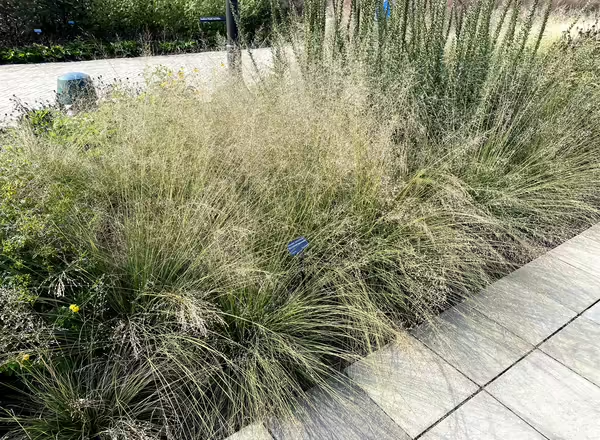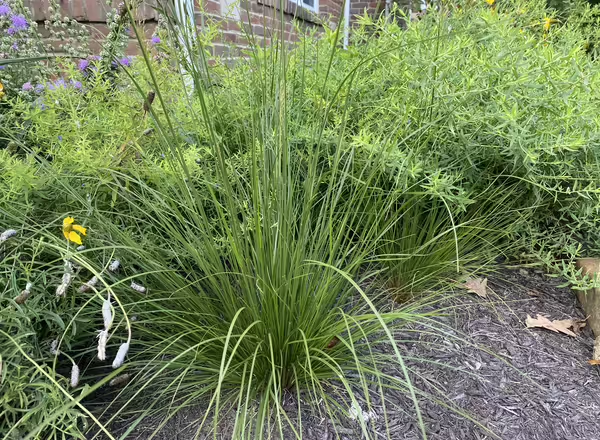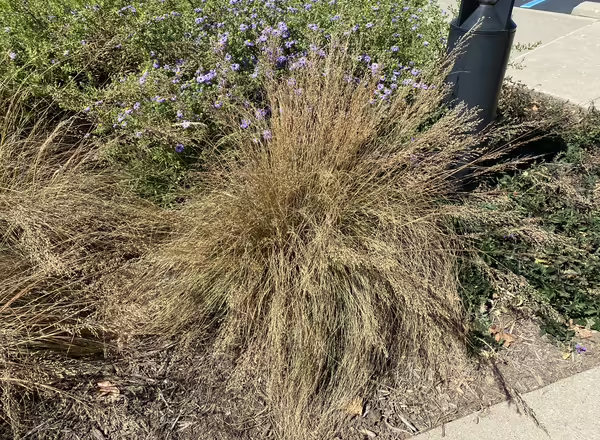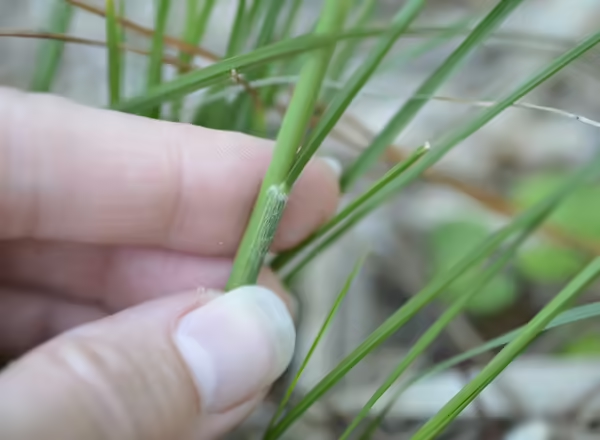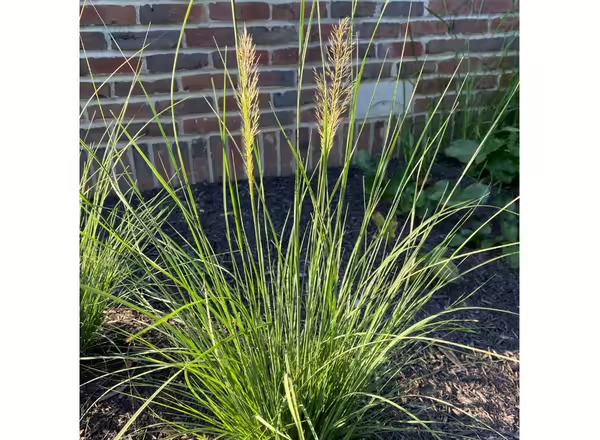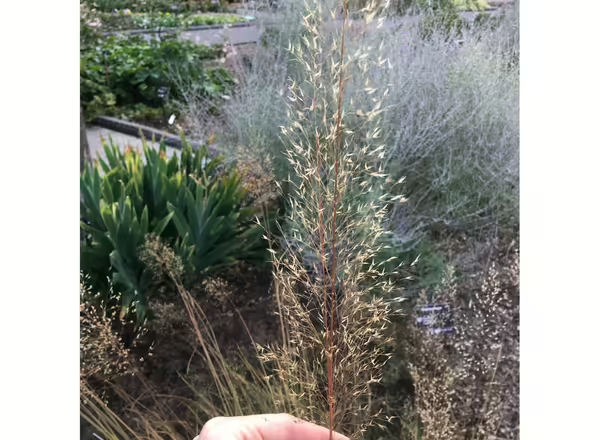A favorite of home gardeners
Native plants have grown in popularity over the past few decades. Based on a 2022 study of native plant availability, Prairie Dropseed ranks in the top 10 of most available native plants in the Midwest. It's commonly found in landscape plantings in front of office buildings, doctor offices, and restaurants.
Identifying characteristics
Prairie Dropseed, Sporobolus heterolepis, is a warm-season bunchgrass growing in tight rounded clumps. Its leaves are thin and tapering, and abundantly numerous per plant. While the clump itself is a great aesthetic addition to the garden, in the summer it puts up flowering stalks that can get about 3 feet tall.
When this grass is mature, all the flowering stalks create an airy, wispy appearance that’s quite beautiful. The inflorescences are narrow panicles, so the spikelets are held on numerous short branches, forming a triangular shape. The seeds are round and when mature, smell like buttered popcorn to some and cilantro to others. The seeds serve as a food source for birds. In the fall, the clumps of grass turn a bronze color.
Need a refresher on grass identification terms, like ligule and spikelet? Check out this blog post!
